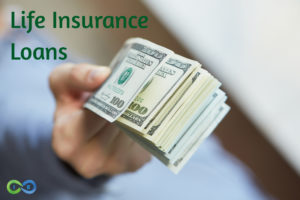You finally decided that permanent cash value life insurance was the right product for you. Your painstaking research ended, and you now feel excited to jump in with both feet. And then someone asks the question: “Are you getting Whole Life or Universal Life?”
Great! Here we go again.
That’s frequently the thought that many have when it comes time to try and find the best life insurance company that is going to meet your requirements, needs and objectives.
But it doesn’t have to be that way.
In this article we want to share the similarities between Whole Life Insurance (WLI) and Indexed Universal Life (IUL) and we also want to share their differences. Our hope is that we can shed some light on these two products and help make the decision process a little easier.
Whole Life vs Universal Life Snapshot
| Product Features | Whole Life Insurance | Universal Life Insurance |
|---|---|---|
| Tax Free Policy Loans | Yes | Yes |
| Tax Free Withdrawals up to Basis | Yes | Yes |
| Considered an Asset | Yes | Yes |
| Flexible or Fixed Premium | Potentially either depending on policy design | Flexible |
| Lifetime Coverage | Yes | Maybe, depends on policy design |
| Increasing Death Benefit | Yes | Maybe, depending on death benefit option |
| Tax Deferred Cash Value Growth | Yes | Yes, although varies based on product |
| Dividends | Yes | No |
| Returns Based on Market Performance | No | Yes for IUL and VUL |
| Cost of Insurance | Fixed COI | Increasing COI |
Universal Life vs Whole Life
Whole life definition: permanent coverage that offers guaranteed cash value growth, fixed premiums and death benefit. Ideally you want dividend paying whole life insurance form a mutual insurance company.
Universal life definition: permanent coverage that builds cash value and offers flexible premiums and death benefit. Flexible premiums can be increased or decreased to meet your financial goals.
When you look at the definitions above, both products sound very similar. In fact, the next section will show you just how similar they are.
Similarities of Whole Life and Universal Life
Whole Life and Universal Life have a large number of similarities. For example, both whole life and universal life are:
- Permanent life insurance products.
- Provide cash value growth.
- Offer tax deferred cash value growth.
- Allow you to borrow against the cash value for tax free life insurance loans.
- Considered an asset.
It’s Permanent, Not Temporary
Let’s look at these similarities one by one in a little more detail. First, the fact that they are both permanent life insurance means that they are intended to last until the insured dies.
There is a caveat here, as some guaranteed universal life policies are designed to last only to age 90, 95 or 100.
This is in contrast to term life insurance which by definition is intended to last for a term and then expire. And when term insurance expires, the premiums increase dramatically. Term insurance policies do not have cash value. You are essentially “renting” a death benefit for the period of the term.
1. Cash Value that Grows
In addition they both have a cash value that grows with the policy. The cash value is one of the major reasons why most people choose to purchase permanent insurance.
The cash value can be used for a variety of purposes during the life of the insured, but it is most frequently used as income during retirement.
This feature is so popular that you will often hear these policies called “cash value life insurance” instead of universal life, whole life, or indexed universal life.
And depending on the IUL death benefit option you choose, both whole life and indexed universal life have an increasing death benefit. This is good news for all those who wants to leave as much money to their heirs as possible.
2. Tax-Deferred Growth
Whole Life and Universal Life both provide tax-deferred growth of the cash value. This means that the growth of the account is not taxed every year like a typical mutual fund or investment account.
And the premiums are paid in after-tax dollars, so you can always withdraw from your cash value up to your basis (the amount of money you’ve put in) without paying any additional tax.
NOTE: The death benefit is always tax-free to the beneficiaries of the policy.
3. Easy Loans for Ultimate Control
One of the best features of cash value life insurance is that you can borrow money using your death benefit as collateral. This money is typically available within a few days after making a request to the insurance company.
There is no qualification necessary. No paperwork. No additional underwriting. No credit check. You just get a check in the mail.
Entrepreneurs have been using this feature of permanent life insurance for over a century now. J.C. Penney, Ray Kroc, Walt Disney, all used their life insurance policies to fund their businesses.
4. Tax-Free Loans
Life insurance loans are convenient, and they are also tax-free. This is a huge benefit because it allows the policy holder to access the cash value in the account (including the growth) without paying taxes.
Some may be skeptical of the no-tax loan feature, but consider that you don’t ever pay taxes on your loans. Why is this? Because you pay interest instead. That interest is considered income to someone else (or another company), who is required to pay taxes on that income.
The same is true of the insurance company, they pay taxes on their income. So, how much is the interest you pay? Typically it is less than the amount you are credited. It’s what we call a wash loan – a loan that is provided at 0% interest.
And in some situations, you may be able to get more credited than you paid in interest, this is an example of arbitrage. This means that you may be credited 5% on your cash value, but a portion of that cash value is loaned to you at 4.5%. In this case you are still making 0.5% on the money you have borrowed.
Further, the principle balance remains untouched, growing in a true compound interest account. So, you borrow the money to take advantage of an investment opportunity, while simultaneously earning interest (and dividends if Whole Life) on your entire cash value account.
5. Life Insurance as an Asset
And finally, both these types of life insurance are considered an asset by the U.S. Government. Why is this important? It is important because you are allowed to sell your assets. You may not see the need now, or for many years.
But consider the case in which the death benefit is far more than is needed to support the spouse of an 80 year old insured. And now the insured has $1 million life insurance coverage that has annual premiums of $10,000.
But the insured may only be earning $60,000 a year in retirement. Rather than struggle to pay the premiums each year, the policy owner may be able to sell the policy for $600,000 to a life settlement company. That money allows the couple to drastically improve their standard of living in their remaining years together as a couple.
All these features are fantastic strengths in a permanent life insurance coverage. And you can find them in both Whole Life policies and Universal Policies. But how are they different and which one is right for you? Let’s take a look.
Differences Between Whole Life vs Universal Life
There are a handful of differences when comparing Whole Life vs Universal Life. We will be specifically comparing whole life vs indexed universal life here.
Let’s take a look at the list of differences first, and then we’ll dig into the specifics down below:
- Whole Life has a fixed cost of insurance – IUL cost of insurance increases as the insured ages
- Whole Life has a guaranteed rate of return (excluding dividends) – IUL has a minimum (floor) and maximum (cap) rate of return
- Whole Life premiums are fixed – IUL premiums are flexible
- Whole Life cash value gains are based on the success of the insurance company – IUL cash value gains are based on the success of the market it tracks
1. Fixed Cost vs. Increasing Cost
Whole Life Fixed Cost
Whole Life policies determine the cost of insurance for the expected life of the policy and then create a average premium price. The whole life insurance provider bears the risk over the long term as the cost of insurance rises.
So, if the total cost of insurance is $120,000 over 60 years, the cost of insurance will be $2,000 annually. That amount is just the cost of insurance, it does not include the cash value investment or the fees.
IUL Increasing Cost
IUL policies, just like all universal life insurance products, are priced differently. UL policies were originally created as a product akin to annual renewable term life insurance with a cash value savings account, where the the cost of insurance is determined each year, based on your original health.
In other words, they assume you are as healthy as you were during underwriting, but add one more year to your age every year. This means your cost increases every year and the insured (rather than the insurer) carries the cost of the increased risk.
Due to this, it may seem as though you wouldn’t be able to afford the policy in your later years, but it doesn’t work that way — here’s why.
As your cash value grows, the amount of death benefit the insurance company has to pay out decreases; this amount is called the “net amount at risk” for the insurance company.
As you age you are more likely to die, but you are also more likely to have a greater cash value, and therefore the “net amount at risk” may remain the same.
But be careful not to deplete your cash value.
2. Guaranteed Rate of Return vs. Minimum and Maximum Rates
Whole Life typically has a conservative crediting rate of around 3-4%. When you include dividends, you may be able to get a rate of return of 6% or more, but you’ll likely cap out at an internal rate of return of around 5-5.5%, making Whole Life a conservative growth vehicle.
If you remember nothing else, remember that. Whole Life is risk adverse.
Indexed Universal Life typically comes with a minimum crediting rate of around 0-1% and a maximum around 13%.
There are also uncapped opportunities with lower participation rates. The benefit to an IUL is that the IUL insurance can have incredibly good years in the double digit range, while also guaranteeing that market drops of 40% will never cause your cash value to decrease.
This is one of the biggest selling points for the IUL- market tracked returns without the risk of negative returns.
Just understand that whole life has guaranteed returns (plus potential dividends), while Universal Life’s returns are not guaranteed and will depend on other factors such as how the stock market performed that year.
3. Fixed Premiums vs. Flexible Premiums
FIXED
Whole life insurance rates are fixed. They do not change. You should be paying the premium every month or your policy could be in danger of lapsing. You have some flexibility, but for the most part you will be required to pay the same premium amount every month for the policy’s duration.
Here are some options you can choose if you cannot make your whole life premium payment:
- You can design your policy to be limited pay whole life insurance where you make premium payments for a set duration. So, if you have a 10 pay policy, once you have made premium payments for 10 years you can stop paying premiums.
- At some point in time you may be able to use your life insurance dividends to pay your premium.
- Additionally, you can skip your paid-up additions rider payment if you choose to.
- Lastly, but not recommended, you can take the cash value in your policy and have it purchase a reduced paid-up policy.
FLEXIBLE
IUL premiums are flexible. There is a target premium for ideal growth, and also a maximum (to avoid the policy becoming a MEC) and also a minimum to prevent policy lapse. This flexibility is the second biggest selling point of the IUL. It’s comforting to know that you can change your premium amount if you get into a bind.
4. Success of the Company vs. Success of the Market
Whole Life
Whole Life insurance is a non-correlated asset, meaning its performance is not correlated to the stock market. For those looking for diversity, this is a great option.
In addition, whole life insurance companies come in two main types — mutual insurance companies or stock companies.
Mutual insurance companies are those that are mutually owned by the policy owners. When you purchase a participating insurance policy, you gain ownership into the company.
Mutuals are generally more long-term focused since they do not have to answer to shareholders.
Stock insurance companies are those that are owned by share-holders. Stock companies may focus on short-term gains, rather than long-term stability, to maximize short-term returns and keep shareholders happy.
The typical whole life policy cash value grows based on the success of the insurance company. If the company does well, the rate of return for the policyholders increases. Some will argue that this is more true of mutual companies than stock companies.
Indexed Universal Life
IUL policies have different crediting strategies tied to a variety of market indexes, such as the S&P 500, NASDAQ 100, DJIA, RUSSELL 2000, etc.
As an example, if the S&P 500 increases in a given year, the policy is credited a percentage of the average gains in that market index, minus any dividends. However, as mentioned earlier, there is a maximum and a minimum for each crediting strategy.
Of all the features of the IUL, this one is probably the one that brings about the largest amount of criticism, because it is complicated.
How does a company offer minimums when they are investing in the market? If they aren’t investing in the market how do they take part in the gains?
These questions are both answered by stating that it is done by buying call options on a given index. This article is too short to try to explain stock options, but it’s sufficient to say that these derivatives are complicated, and investors typically have a hard time understanding what’s happening in the “black box” so to speak.
Whole Life vs. Indexed Universal Life – Wrap Up
First and foremost it’s important to note that both of these types of insurance may be the perfect fit for the right individual. But if you’re looking for a little more guidance allow us to provide some.
Whole Life is typically for the investor that is looking for low risk and steady but conservative growth. Whole Life will deliver on it’s promises and you will not be unpleasantly surprised late in the life of the policy.
The IUL investor is looking for a little more gains and is willing to risk some security to go after those gains. In addition, the IUL provides a bit more flexibility with regard to premiums so it may fit the investor that has a more sporadic stream of income.
One word of caution, the rising cost of insurance associated with the IUL, and the potential for premium loans, can create a perfect storm for those that are unprepared at an old age. If the cash value is not enough to offset the rising cost of insurance the possibility of the policy lapsing increases dramatically.
Navigating the financial waters of the life insurance ocean can be a little overwhelming. We at I&E hope that this article provided a little help to you and your family. If you would like a free consultation to see which company and product best meets your goals and objectives, please give us a call today for a free strategy session.





